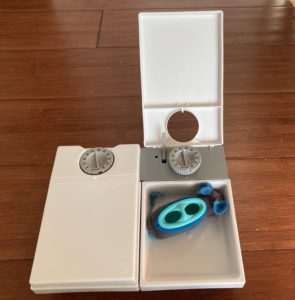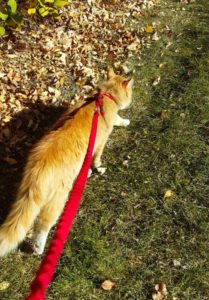I got my first cat when I was 8 yrs old. Marty was a Siamese kitten that came from a litter owned by one of my father’s co-workers. Marty was an indoor-outdoor cat. We did keep up on his vaccines at his yearly veterinary appointment. There were cat fights and he went to the vet frequently to be patched up. My sister got a female Siamese cat and Marty mated with Mischi and a number of cats resulted from this pairing. Marty was neutered when he was 7 years old.
I took him to college with very little thought as to how the outdoor cat would adapt to being the indoor-only cat; he did all right although my college roommates were not taken with his scruffy, tomcat appearance. I adopted two of Marty’s grand kittens with little thought as to whether all the cats would get along. Luckily, the old cat and the two younger male cats (they were neutered) got along famously. Marty lived to be 15 years old.
Changes in Cat Care – Things Are Different Today
- In America, many pet cats are indoor cats now. In Europe, the cat flap is still a thing and cats tend to have more outdoor access.
- Medical care for your cat has advanced – dental care and treatment for kidney disease and hyperthyroidism are more common now.
- The dietary needs of cats are much better understood now. Not only are there commercial diets formulated to meet basic nutritional needs, there are also diets for treatment of medical conditions.
- There are not many studies on the longevity of domestic cats but the general consensus is that the indoor cat lives longer than the outdoor cat, being protected from hazards such as cars and disease.
The Indoor-Only Cat
Pros
- The indoor-only cat has less risk of diseases spread through interactions with other cats, such as Feline Leukemia, Feline Immunodeficiency Virus, Feline Infectious Peritonitis.
- The indoor-only cat has less exposure to parasites such as hookworms, roundworms, ticks, and heartworms.
- The indoor-only cat has little risk of a road traffic accident as long as she does not escape outdoors.
- Potentially stressful and injurious interactions with neighboring cats are reduced for the indoor cat – but…indoor cats in multi-cat households can get into fights.
- Living indoors reduces the risk of your cat being attacked by larger animals such as dogs and coyotes.
- Keeping cats indoors can protect wildlife species that are potentially prey for the domestic cat.
Cons
- Indoor cats are have a greater incidence of obesity and associated risk of diabetes. Your cat, designed to be a hunter, can become bored from lack of activity, and soothe himself by eating.
- An indoor only cat has less opportunities to engage in predatory behavior than the outdoor cat. Cat guardians must provide these opportunities through interactive and object play.
- Urine spraying, scratching and facial rubbing are normal behaviors for a cat. Cat guardians need to provide outlets for these behaviors with scratching posts and areas for facial rubbing and be prepared to address house-soiling behaviors.
- Outdoors, a cat has control over its actions; the indoor cat can become frustrated since she is confined.
- Indoor cats in multi-cat households may not always get along. Access to the outdoors increases the size of the home territory and allows cats to “space” themselves.
Making the Life of the Indoor-only Cat Fun
- Play with your indoor-only cat every day. Laser pointers and wand toys can simulate hunting. Make sure that your cat has a successful hunt by getting a treat at the end or being able to have the toy itself at the end of play.
- Keep your kitty on the prowl by feeding multiple small meals a day. Use food puzzles if you like or move feeding stations around.
- Be sure to provide elevated places for your cat if she is a climber or boxes and play tunnels if he tends to stay low.
The Compromise
- Your cat may enjoy supervised walks in the backyard on a leash. If you venture further, have your cat trained to a backpack or stroller for safety.
- A catio can allow your cat fresh air and sunshine in a safe place.



My Cat Household Today
My current household has 4 cats. My two older cats, are 14 and 16 years old and have access to an outdoor yard if someone is home. The younger cats are 4 and 5 years old – their access to the outdoors is by once to twice daily supervised walks. All cats have access to a small catio in the backyard and another on the second story porch.

